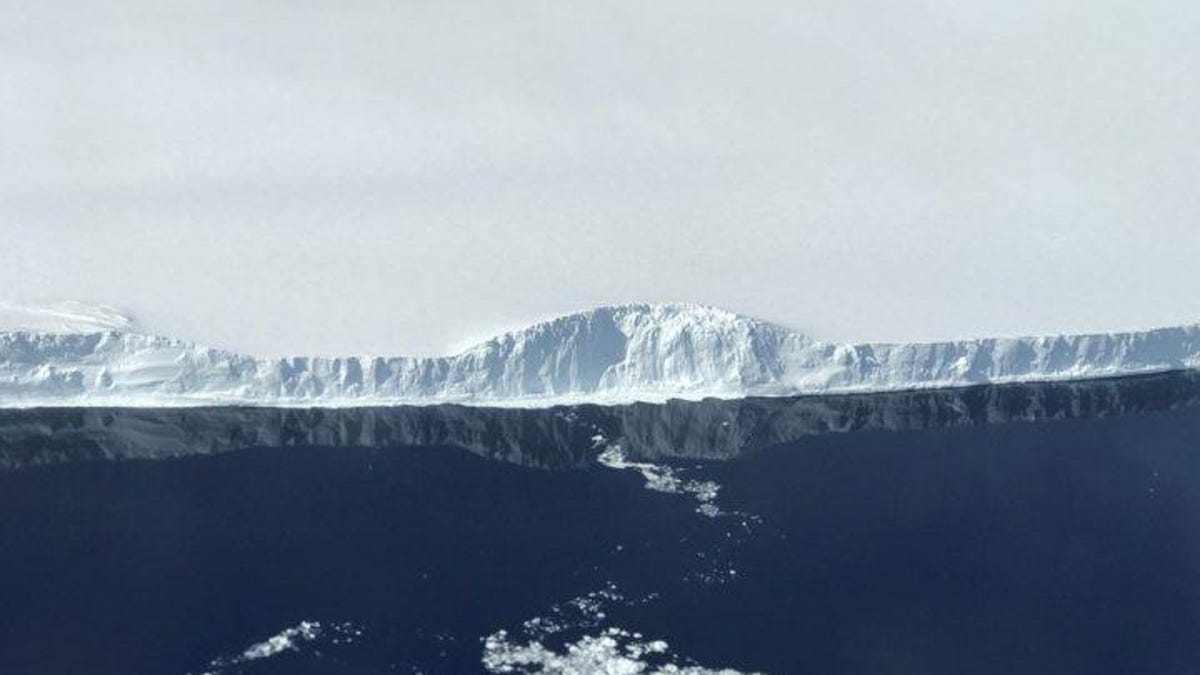See that massive Antarctic iceberg up close
A-68 was the iceberg seen around the world. Now, NASA has a close flyover look at the monster to go with all the satellite images.

This photo shows the edge of the A-68 iceberg.
The world watched in wonder in July as a massive iceberg broke off the Larsen C ice shelf in Antartica. The visuals of the dramatic event came to us courtesy of satellite images. Now, we have closer eyes on the A-68 iceberg thanks to NASA's Operation IceBridge mission.
NASA science writer Kathryn Hansen flew along with an Operation IceBridge plane as it soared over the Antarctic Peninsula on Nov. 12.
"A-68 is so expansive it appears if it were still part of the ice shelf," said Hansen in a blog post.. "But if you look far into the distance you can see a thin line of water between the iceberg and where the new front of the shelf begins."
The European Space Agency said the iceberg was twice the size of Luxembourg when it broke off, making it one of the largest icebergs on record. NASA compared it to the size of the state of Delaware.
This close-up look is a nice complement to the satellite images we've seen of A-68. Hansen describes the edge of the iceberg as "towering."
NASA scientists are using Operation IceBridge flights to map polar ice. The space agency can only operate its research airplanes during limited windows of time due to the harsh weather conditions in the area. The current mission started in late October.
Batteries Not Included: The CNET team reminds us why tech is cool.
Crowd Control: A crowdsourced science fiction novel written by CNET readers.

